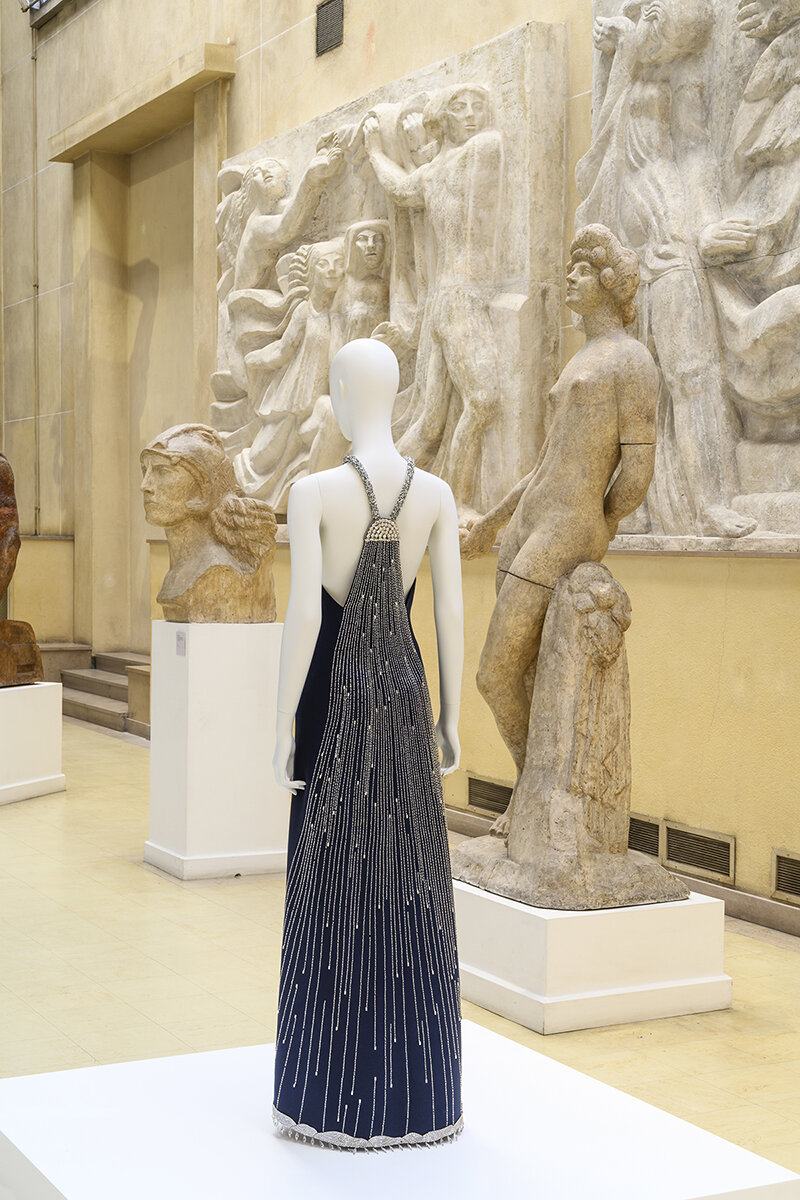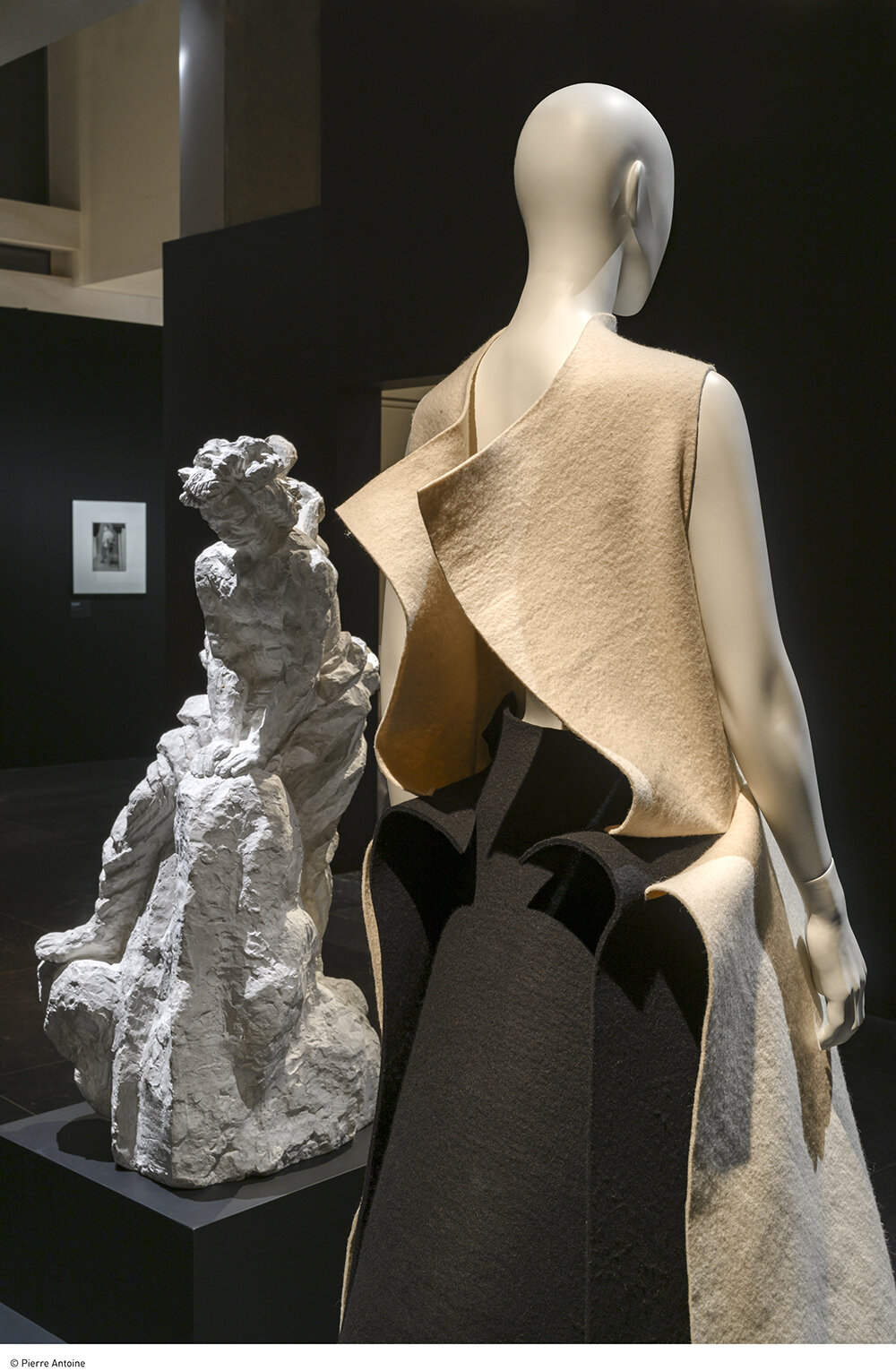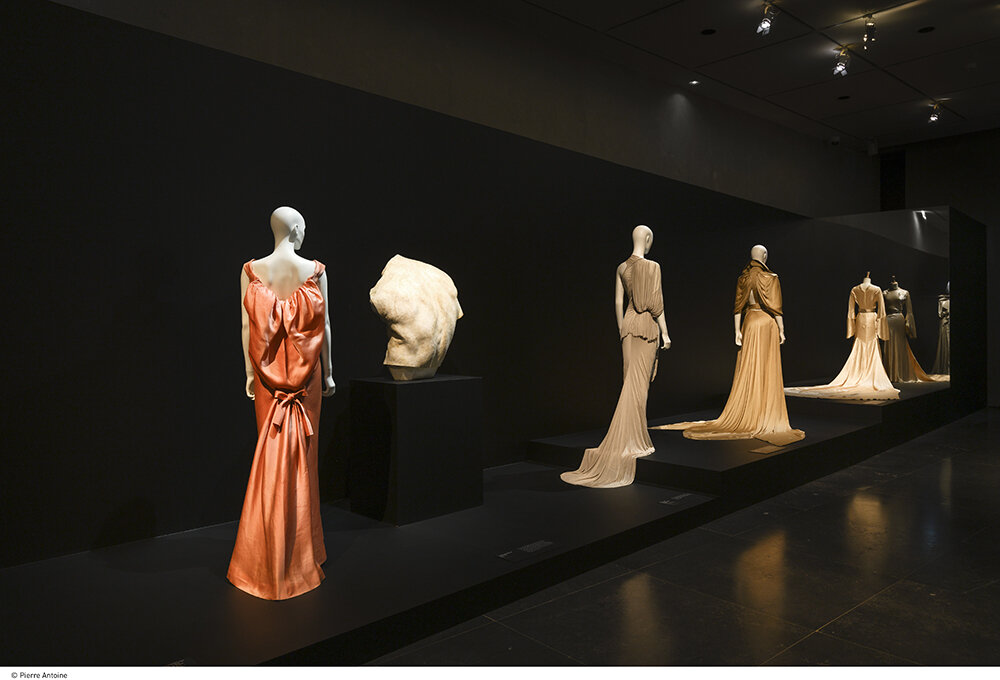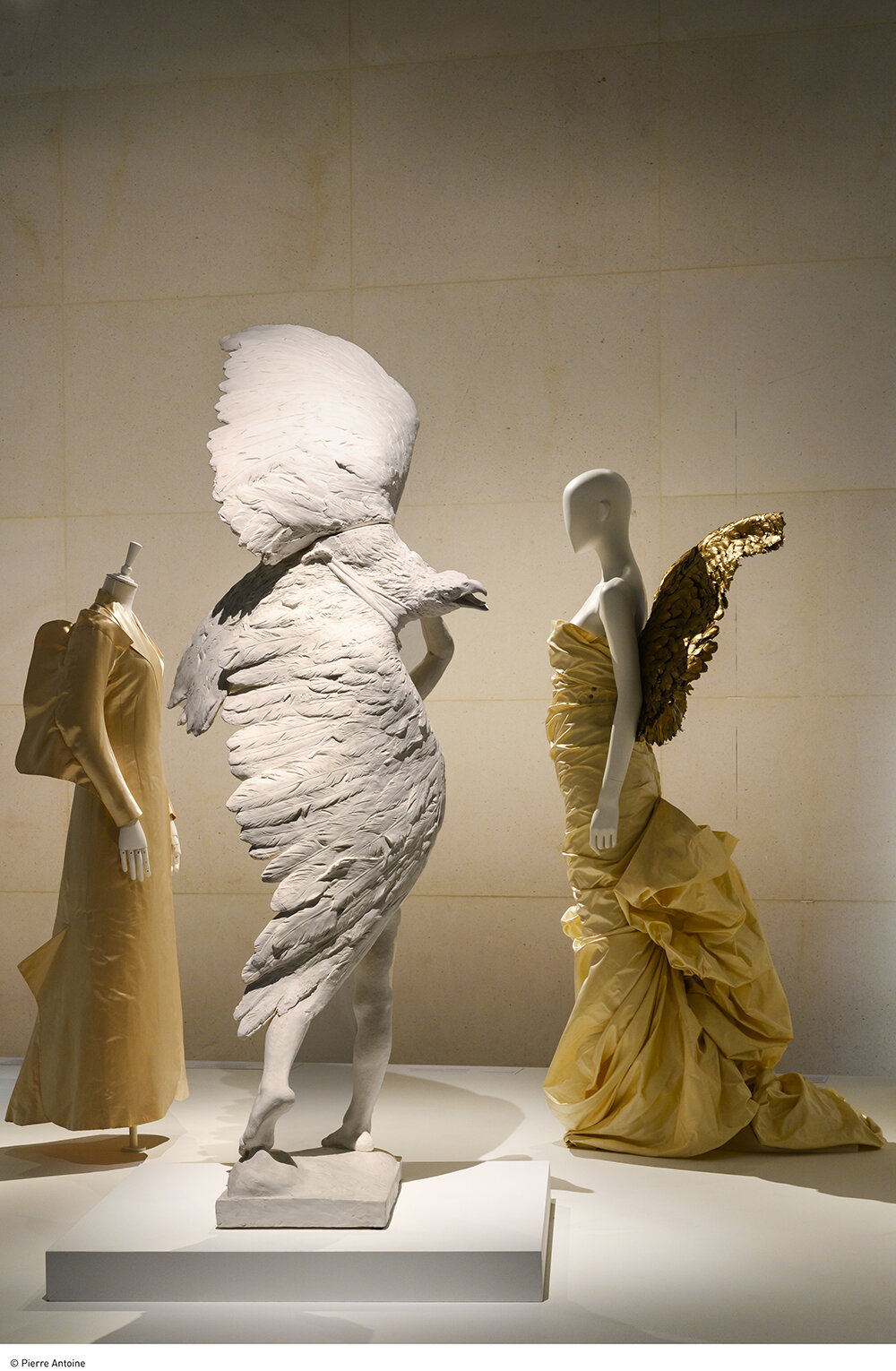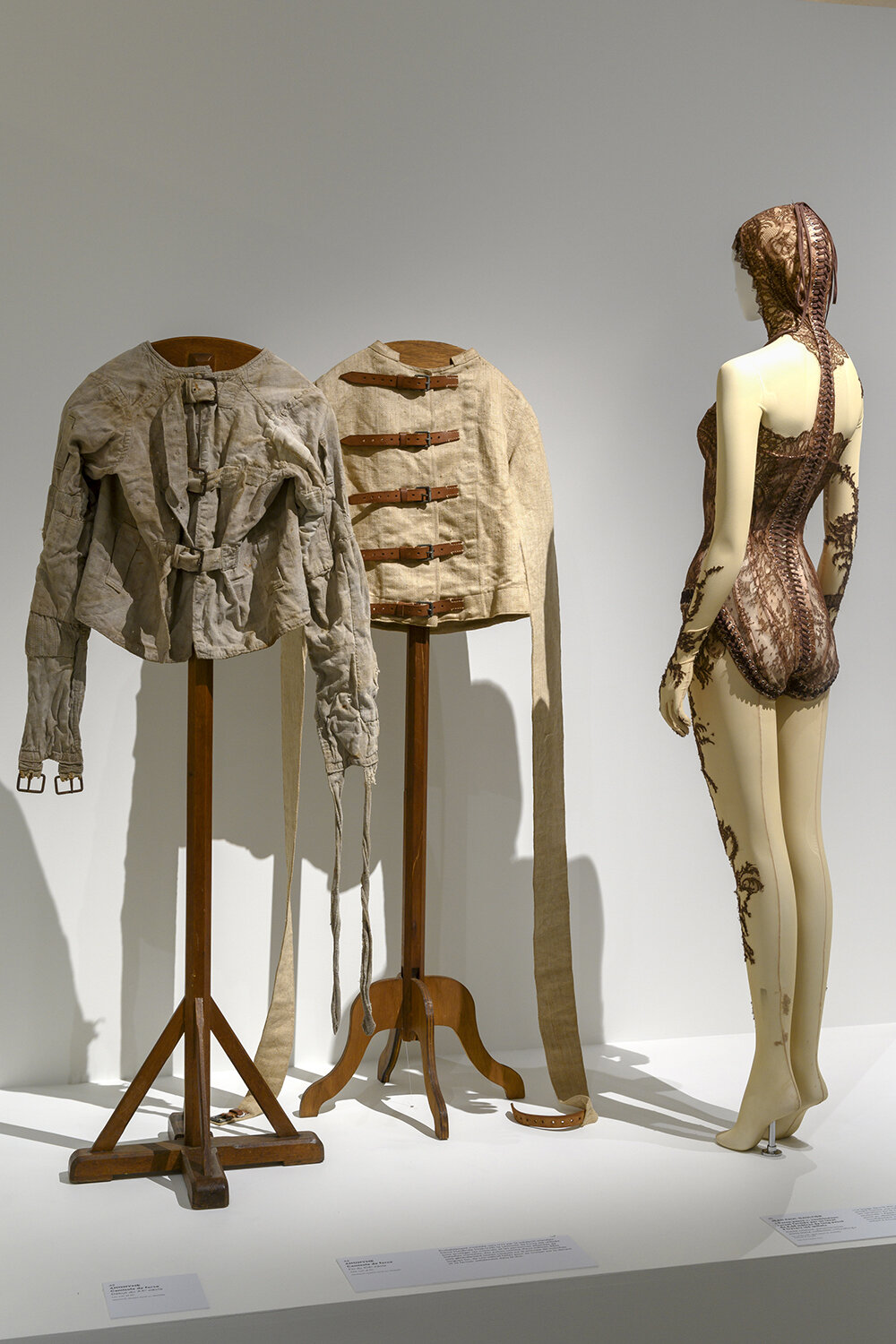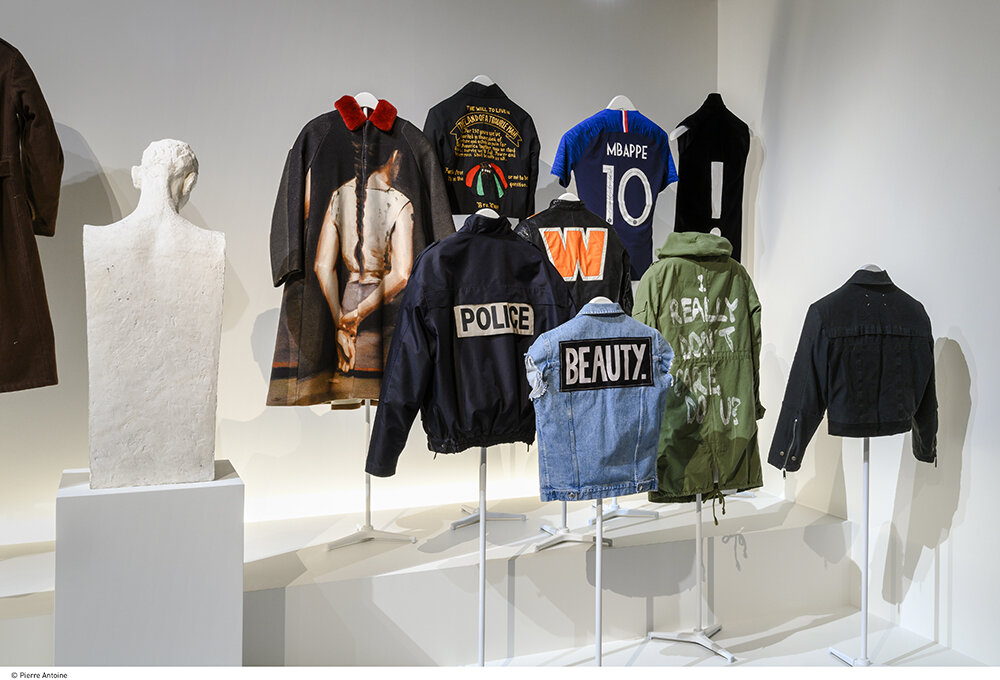Rick Owens, Temple Of Love is a meditation on romance, beauty, and diversity. It archives one of today’s leading designers, transforming the museum into a shrine to creativity.
Courtesy of Palais Galliera
text by Kim Shveka
Rick Owens, Temple of Love is the first exhibition in Paris dedicated to fashion designer Rick Owens, which he creative directed himself. The massive retrospective features collections from his beginning in Los Angeles through his most recent theatrical runways in Paris’s Palais de Tokyo.
With his radical fusion of Gothic Romanticism, Brutalism, and Minimalism, which often provokes social and political themes on his runways, Rick Owens has long been known as fashion’s avant-garde designer. His aesthetic challenges conventional notions of beauty, gender, and form, often occupying a space between fashion, performance art, and architecture.
In the exhibition, we gain rare insight into the designer’s creative inner world, understanding how his references come to life and the ideas that lie behind his work. Gustave Moreau, Joseph Beuys, and Steven Parrino were among Owens’s sources of inspiration, resonating with his embrace of destruction as creation, the usage of art as a vehicle for criticism, and the glorification of beauty through excess. The exhibition also focuses on the central role played by his lifelong wife and muse, Michèle Lamy, whose presence is always felt through Owens. We get an intimate glimpse into the couple’s private world through a recreation of their California bedroom, designed using pieces from Owens’ furniture line. Just beyond the wall, their closet room is unveiled, with dark garments loosely folded next to a packed bookshelf. This section of the exhibition feels like a genuine invitation into their daily lives, where we are meant to truly feel their presence. The air itself is infused with Rick Owens’ signature scent, activating all five senses for a complete journey through their rituals.
Courtesy of Palais Galliera
In another room, plastered with “No photos please” signs, stands perhaps the most Rick Owens-esque piece in the exhibition: a towering statue of Rick himself, mid-urination. It reads as the most cynical, provocative fountain since Marcel Duchamp.
The exhibition is extended throughout the entirety of the Palais Galliera campus, as well as the outside garden, wherein California-native plants and vines surround thirty brutalist cement sculptures. Above the garden is the building of the exhibition, whose windows display three colossal statues of Owens covered head to toe in gold. Owens saw the importance of finishing his retrospective with his origin, California. As a designer whose presence casts a looming glunge shadow over the City of Light, it’s easy even for him to overlook his roots in the Sunshine State.
Courtesy of Palais Galliera
Rick Owens, Temple of Love is on view through January 4, 2026 at Palais Galliera, 10 Av. Pierre 1er de Serbie, 75116 Paris

![Jeanloup Sieff, Eve from behind, Kim Islinski [Top and skirt Martine Sitbon, published in New York,1997] © Estate of Jeanloup Sieff](https://images.squarespace-cdn.com/content/v1/544cb720e4b0f3ba72ee8a78/1571798019244-IN4BFT01MJ43GMEWWFWP/29+Sieff+Kim+1997.jpg)

